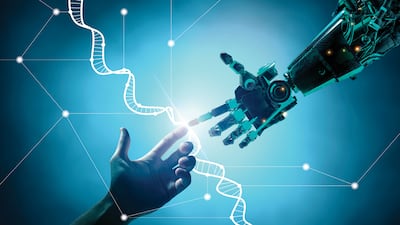The singularity is no longer a concept that is confined to science fiction. Instead, it is a transformative moment in humanity’s trajectory, one in which artificial intelligence surpasses human intelligence and begins to evolve autonomously. This leap, driven by advancements in AI, quantum computing and brain-machine interfaces, promises to transform humanity in ways that we can only begin to imagine right now.
For some, the singularity is potentially an existential threat; for others, it is an opportunity to transcend human limits. However, the question is not whether it will happen, but rather how we should get ready for it.
The singularity refers to a tipping point where machines achieve superintelligence, a stage at which they are capable of reasoning, learning and adapting across any domain. Beyond the current stage of AI lies the potential for recursive self-improvement, where AI begins to improve itself at an exponential pace, creating superintelligence far beyond human comprehension.
Some experts predict that this could happen within the next 20 to 30 years, based on rapid advancements in two critical enablers: the development of self-supervised learning models and progress in advanced hardware such as quantum computing and neuromorphic chips.
The development of these technologies is accelerating, suggesting that the singularity may arrive sooner than many expect it to. This closer horizon emphasises the urgency of rethinking humanity’s role in this transformative era. Although this vision of superintelligence has sparked fears of a world dominated by machines, it also offers a unique opportunity to rethink humanity’s future.
Instead of competing with the singularity, humanity has the potential to evolve alongside it. This is where human-machine integration becomes critical. Technology such as Neuralink’s brain-machine interface is already enabling direct communication between humans and machines, amplifying our cognitive and physical capabilities, and paving the way for seamless integration.
Today’s prosthetics, evolving into advanced bionic limbs, offer a glimpse of how technology can augment human abilities. These innovations are not just reactive solutions – they are the foundation of a new phase of human evolution.
Human-machine integration provides a practical and visionary response to the singularity. By merging with AI, humans can enhance their abilities and shape the trajectory of superintelligent systems. This is not about losing our humanity but redefining it.
Just as language and the written word expanded the boundaries of human thought, merging with machines could unlock new levels of creativity, problem solving and understanding. Instead of machines surpassing us, we create a future in which humans and AI collaborate in ways that were once unimaginable.
But preparing for this future requires taking proactive steps today.
Advances in prosthetics and brain-machine interfaces address immediate needs, such as aiding individuals with disabilities, but they also lay the groundwork for larger-scale integration. As these technologies improve, their adoption will accelerate, mirroring the exponential pace of AI development.
Imagine a world where humans can think at the speed of AI, where many physical disabilities can be eradicated by bionic enhancements, and where augmented cognition enables us to tackle challenges such as climate change or colonising outer space. This is not some distant utopia but a realistic vision of how humans and AI can evolve together.
Certainly, many challenges remain. How do we ensure that these technologies are accessible to all, thus preventing a divide between the enhanced and the non-enhanced? What ethical boundaries should govern the merging of humans and machines? How do we ensure that AI remains aligned with human values?
Further, how can we protect against the risk of AI-driven systems overwhelming human cognition, a situation in which machine intelligence might overtake the brain’s decision-making processes, subtly influencing beliefs, behaviours or autonomy, or even creating a back door for other humans to control us.

The answers to these questions demand serious collaboration across many sectors – scientists, policymakers and business leaders must all work together to address these issues responsibly and ensure that integration enhances rather than diminishes the human experience.
The singularity does not have to be a zero-sum game. By merging with superintelligent systems, humanity can redefine its place in the world. Brain-machine interfaces could allow us to bridge the gap between biological and artificial intelligence. Bionic enhancements could expand our physical and mental capabilities beyond their natural limits. These advancements offer the chance to not only survive the singularity but thrive in a world transformed by it.
A creature cannot eliminate its creator. This principle reflects a deep relationship between humanity and the systems we build. Our ability to shape, guide and integrate with advanced technology ensures that the singularity is not a threat but a call to action. By embracing this moment of transformation, humanity can create a future where people and machines work together to unlock unprecedented possibilities.
This is not just evolution – it is a revolution. And it begins now.


